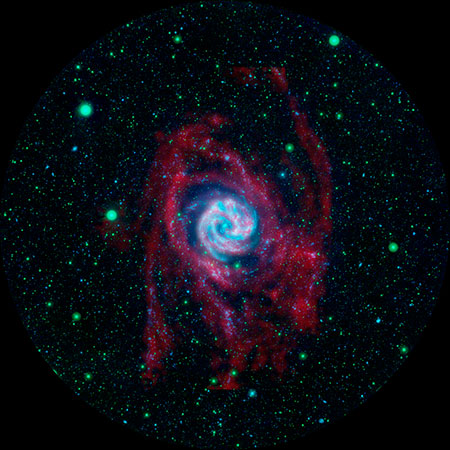Christmas Tree Cluster III

Credit: Russell Croman
The Christmas Tree Cluster focusing in on the Cone Nebula
The Christmas Tree Star Cluster is one of four astronomical objects identified within NGC 2264. The other three being the Cone Nebula Nebula, the Fox Fur Nebula and the Snowflake Cluster. You'll find them all in the Monoceros constellation, one of Orions neighbours.
The Christmas Tree Cluster (NGC 2264) was discovered by William Herschel in 1784 and can be observed with binoculars if you so wish. The star cluster includes many interesting and curious structures in the gas and dust. At the bottom of the frame, the dark triangular feature is known as the Cone Nebula ( mentioned above). The region to the right of the brightest star has a strange, fur-like texture that has led to the name Fox Fur Nebula, also mentioned above.
I've collected a few images of the Christmas Tree for you to enjoy these holidays. Links to the original and more scientific information about this spectacular view in the sky is integrated in the text.
The image above is taken January December 2005 can be found on Russell Croman Astrophotography(click image for a larger view). Note that I have rotated all the Christmas Tree Cluster images so that we see 'a tree' standing upright.
The Cone Nebula - Close-Up

Credit Esa/NasaAs we are focusing in on the
Cone Nebula in the Christmas Tree Cluster you might as well get a really close look. It is rather peculiar and pretty, the Cone Nebula. It can certainly survive a close-up with dignity.:-)
































